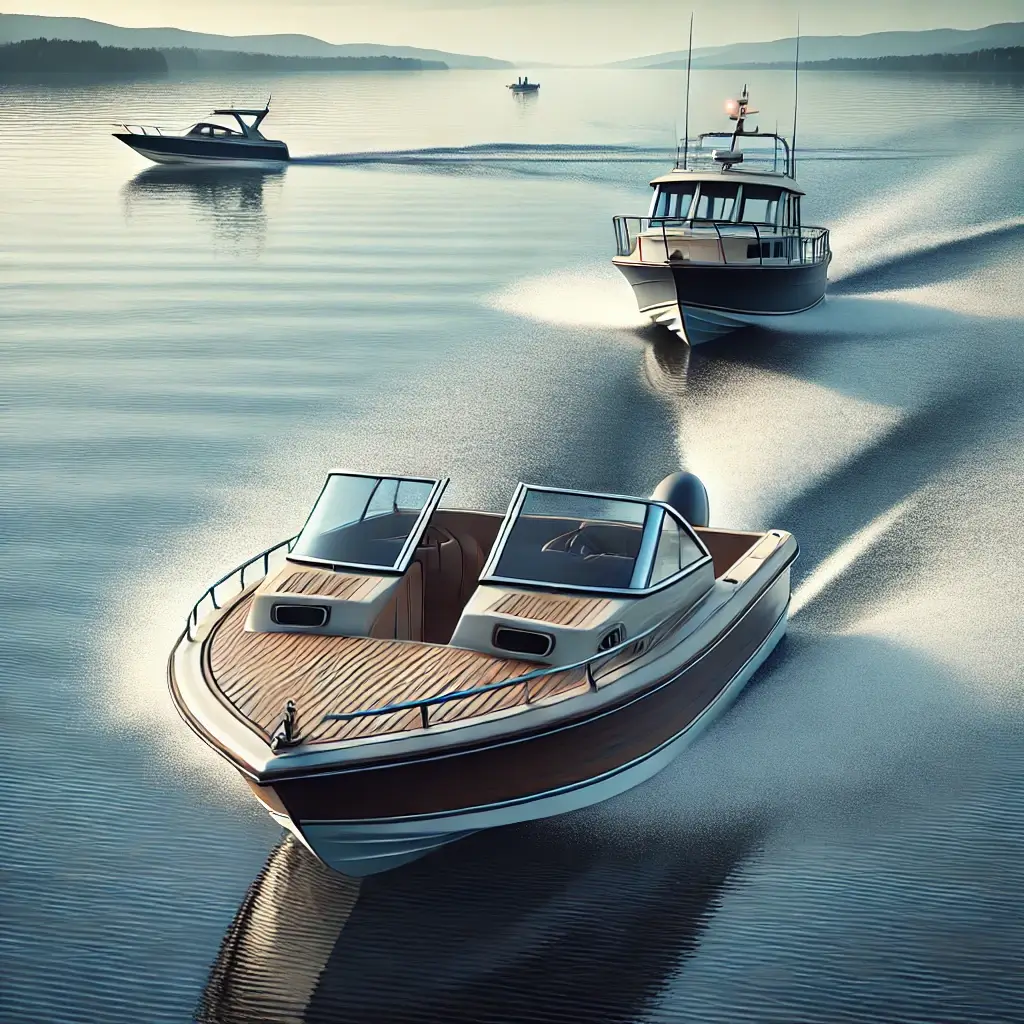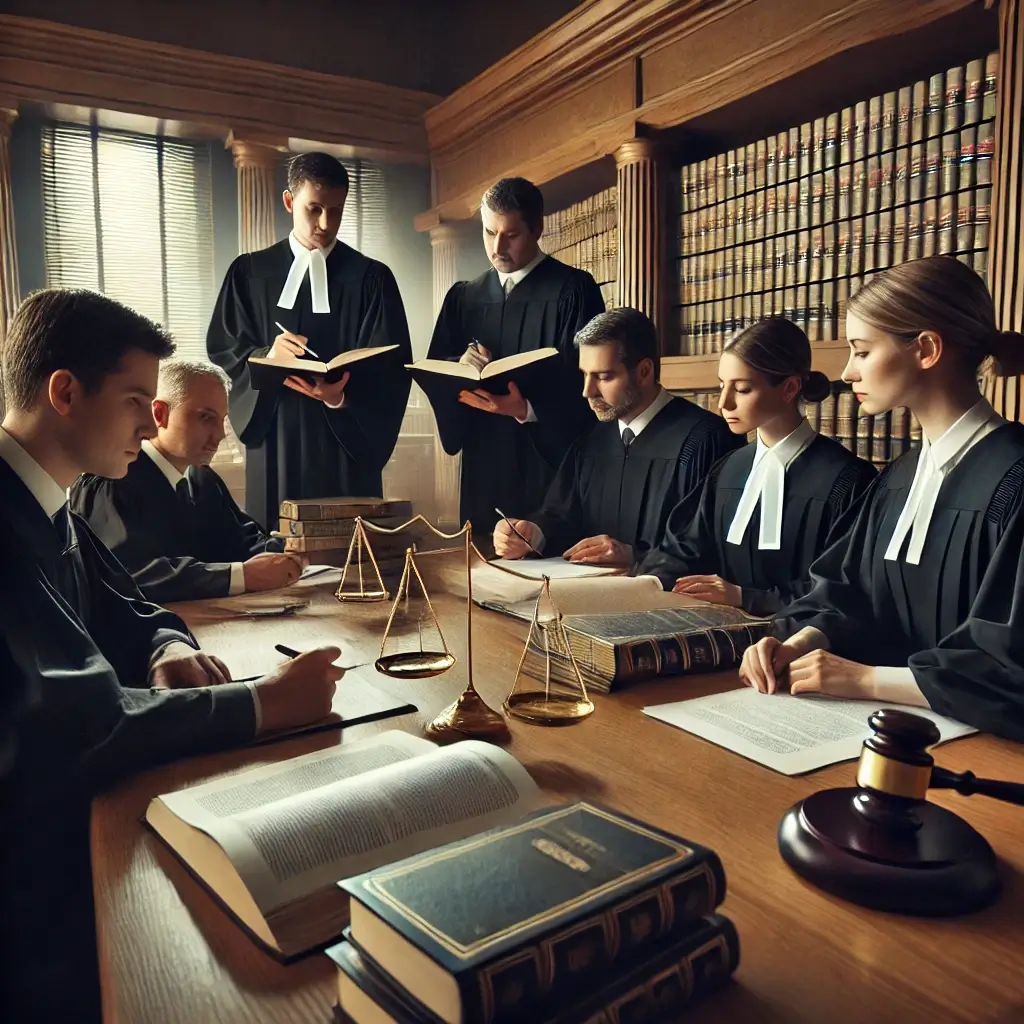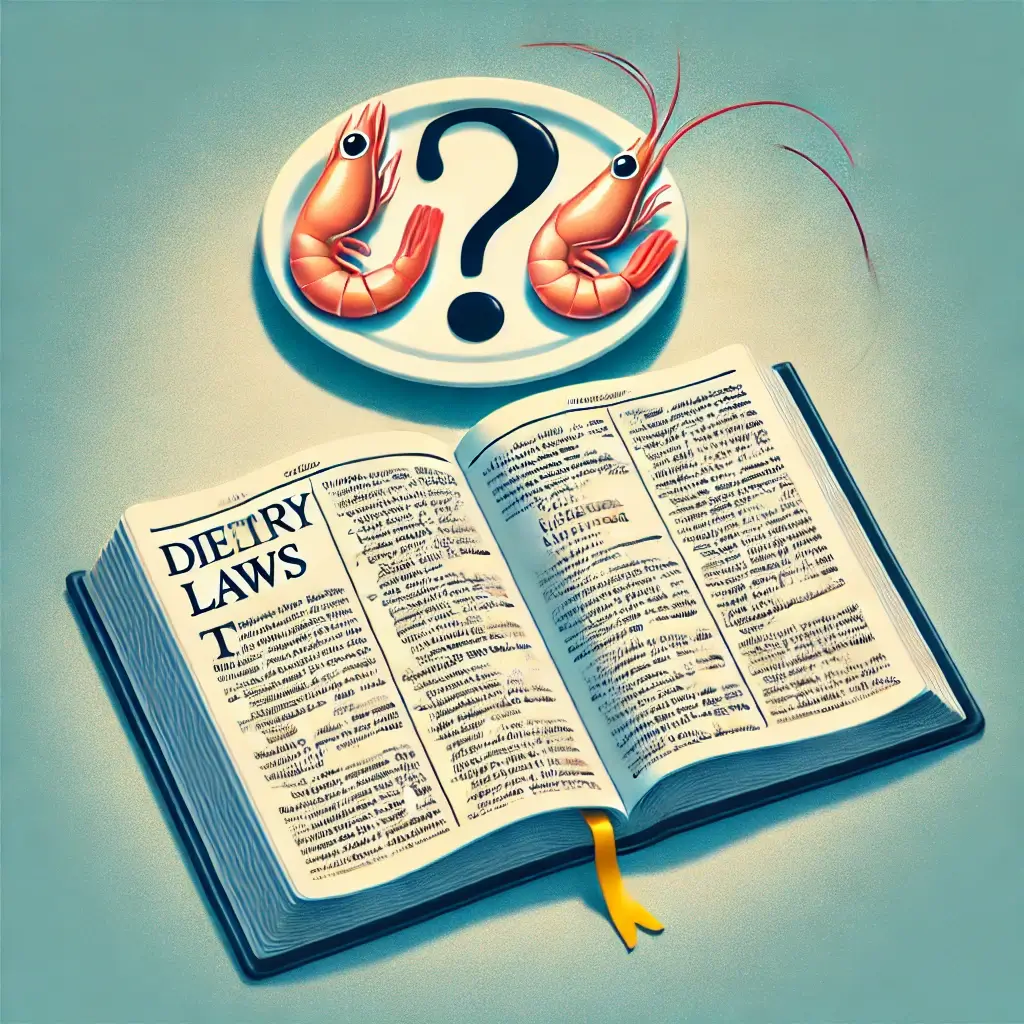When you're cruising through the water, safety first is paramount. Boating accidents can hit when least expected, and having the right responses beforehand can save lives. One of the common situations that boaters find themselves in is seeing another boat approaching on their right side. So, if you see a motorboat approaching on your right. What action should you take? This guide presents a step-by-step walkthrough on how to handle such situations with confidence and concern.
Knowing the Rules of the Water
Just as highways have traffic regulations, waterways have navigational rules. Boaters need to follow rules from the U.S. Coast Guard and international maritime practices to prevent accidents and travel safely. These rules explain who gives way and how to respond when you see a motorboat approaching on your right. What action should you take?
Give-Way and Stand-On Vessels
In boating, crossing scenarios give boats two different roles:
Give-Way Boat: The boat that is required to act to prevent a collision.
Stand-On Boat: The boat that is supposed to maintain its course and speed unless a collision is imminent.
If you see a motorboat approaching on your right. What action should you take? You're the give-way boat, so you have to change your course to make way.
Steps to Take When a Motorboat is Approaching on Your Right Side
Identify Your Position
When a motorboat is approaching you from the right, you're the give-way boat, and they are stand-on. The stand-on vessel has the right of way and must stay on course and speed. When you see a motorboat approaching on your right. What action should you take? Identify your role at once.
Slow Down and Turn Right
As the give-way boat, back off your throttle to allow the other boat to go by. If you need to, turn right to maintain a safe distance between you. Don't cut in front of the oncoming motorboat—it increases the danger of a collision. When you see a motorboat approaching on your right. What action should you take? Slow down and maneuver.
When foggy or in case the other boat appears unaware of your presence, sound signals can convey your intention:
A single short blast (1 second) signifies a starboard turn (to your right).
Two short blasts represent a port (left) turn.
Five or more short blasts warn others to be on guard.
When you see a motorboat approaching on your right. What action should you take? Use signals as necessary.
Be Aware of Other Craft
As you follow the motorboat, remain vigilant for other watercraft in the vicinity. Be on the lookout for paddleboards, jet skis, or smaller boats that may be present.
Maintain a Safe Speed
Steer clear of sudden turns or high speed when making adjustments. Drive at a speed where you can respond calmly to other boats. When you see a motorboat approaching on your right. What action should you take? Keep control.
Why Sticking to the Right Protocol is Important
Disregarding boating regulations can cause accidents, penalties, or even deaths. Water collisions are as perilous as terrestrial ones—if not more so. Here’s why compliance is essential:
Prevents Collisions: Understanding and adherence to give-way and stand-on rules minimize the risk of crashes.
Ensures Safe Passage: Unambiguous maneuvers enable others to anticipate your movement.
Prevents Run-In with the Law: Breaking navigation rules could result in fines or revocation of boating privileges.
Ensures Passengers' Protection: Making responsible decisions keeps everyone on your boat safe.
When you see a motorboat approaching on your right. What action should you take? Stick to the procedure.
Avenues to Be Avoided
Lack of Identifying Your Role
Some boaters hesitate when you see a motorboat approaching on your right. What action should you take? Always remember: yield if it's on your starboard side.
Crossing in Front of the Other Boat
Cutting in front of an oncoming motorboat is asking for trouble. Drive right to make room instead. When you see a motorboat approaching on your right. What action should you take? Don’t make this mistake.
Failure to Recognize Communication Signals
Other boaters might use horns or gestures to signal plans. Respond correctly to ensure mutual understanding.
Excessive Speed
Going too fast hampers your ability to adjust in time. Dial back speed near other boats.
What If You’re in a Narrow Channel?
In confined waterways, extra caution is key:
Hug the right edge of the channel.
Sound signals help when passing or overtaking.
Keep a moderate speed for better control.
When you see a motorboat approaching on your right. What action should you take? Adjust to the close quarter.
What to Do If There is Poor Visibility
Mist, showers, or darkness can conceal other boats. When you see a motorboat approaching on your right. What action should you take? under poor visibility:
Turn on navigation lights to remain visible.
Slower speed and cautious movement.
Employ audio warning to make your presence known.
The Role of Technology in Safe Boating
Advanced technology supports collision avoidance:
GPS Navigation: Locates your position and close-by boats.
AIS (Automatic Identification System): Follows vessel movements and alerts you to oncoming craft.
Radar Systems: Helpful in low-light situations to pick up other boats.
When you see a motorboat approaching on your right. What action should you take? Tech can help.
Final Thoughts
Boating safety depends upon knowledge, awareness, and quick decision. When you see a motorboat approaching on your right. What action should you take? The solution is easy: yield, slow down, and move right to avoid a crash. These easy yet essential maneuvers make boating fun, safe excursions for you and others. Stay alert, obey waterway regulations, and keep safety first. With these good habits, you'll handle any encounter with confidence. Have a great time on the water!
Some Boating Rules and Regulations of Different Countries to Ensure Safe Navigation Are as Below:
United States (US) – U.S. Coast Guard Regulations
Right of Way: Powerboats give way to sailboats and starboard-side boats.
Speed Limits: Vary by state; usually 5-10 knots in no-wake areas.
Life Jackets: Mandatory for everyone, particularly children under 13.
Navigation Lights: Compulsory between dusk and dawn.
Boating License: Required in most states for operators.
Canada – Transport Canada Boating Regulations
Right of Way: Powercraft yield to non-powered vessels.
Safety Equipment: Must have life jackets, sound equipment, fire extinguishers, and lights.
Alcohol Laws: No boating under the influence.
License: Pleasure Craft Operator Card for powered craft.
United Kingdom (UK) – Maritime and Coastguard Agency (MCA)
Give-Way Rules: Obey COLREGs—right-hand boats give way.
Speed Limits: 6 knots in harbor, varies elsewhere.
Life Jackets: Required for children, advised for adults.
Licensing: Required for larger craft.
Australia – Australian Maritime Safety Authority (AMSA)
Right of Way: Give way to starboard-side craft according to international regulations.
Speed Limits: Usually 5 knots close to shore or populated shores.
Alcohol Rules: Hard 0.05% BAC for drivers.
Safety Gear: EPIRB required offshore.
European Union (EU) – Varies by Country
Right of Way: COLREGs give preference to starboard-side ships.
Speed Limits: Typically 5-10 knots in harbors, varies from country to country.
Life Jackets: Required in most areas.
License Requirements: Required for high-speed or large vessels in countries such as France or Germany.
India – Inland Waterways Authority of India (IWAI)
Right of Way: Sailboats and larger vessels have priority over powerboats.
Safety Equipment: Must have fire extinguishers, life jackets, and distress signals.
Speed Limits: Depends on waterway and state.
License: Commercial boats are required, recreational is not.
Here Are Some More Boating Laws and Regulations from Yet More Countries Around the Globe:
New Zealand – Maritime New Zealand (MNZ)
Right of Way: Powerboats give way to non-powered; starboard vessels have priority.
Speed Limits: 5 knots within 200 meters of land or 50 meters of other craft.
Life Jackets: Compulsory on vessels less than 6 meters.
Alcohol Rules: Operators should remain sober.
South Africa – South African Maritime Safety Authority
Right of Way: COLREGs; bigger and right-hand vessels have priority.
Speed Limits: 5-10 knots in harbors and limited areas.
Life Jackets: Compulsory for everyone on small boats.
License: Required for boats 15 HP or more.
Japan – Regulations of Japan Coast Guard
Right of Way: Starboard craft and commercial and fishing vessels take the lead.
Speed Limits: 5-10 knots within harbors, varies locally.
Life Jackets: Mandatory for small craft, compulsory for children.
Boating License: Mandatory for motorboats.
Brazil – Marinha do Brasil (Brazilian Navy)
Right of Way: Powerboats give way to sailcraft and starboard-side craft.
Speed Limits: Enforced within shores and busy zones.
Life Jackets: Mandatory for fast or small craft.
Alcohol Limit: 0.06% BAC limit for operators.
Russia – State Inspection for Small Vessels (GIMS)
Right of Way: COLREGs; powerboats give way to smaller/unpowered vessels.
Speed Limits: Restricted on rivers/lakes, regional variation.
Boating License: Powered boats and jet skis require a license.
Safety Gear: Life jackets and extinguishers are compulsory.
United Arab Emirates (UAE) – Dubai Maritime City Authority (DMCA)
Right of Way: Larger/commercial vessels take precedence; COLREGs adhered to.
Speed Limits: 5-10 knots in port.
Life Jackets: Compulsory for everyone on board.
License Requirements: Required for jet skis and motorboats.
Mexico – SEMAR & Port Authorities
Right of Way: Non-motorized boats take precedence over powerboats.
Speed Limits: Restricted close to tourist areas and ports.
Life Jackets: Compulsory for all.
Boating License: Required for some motorized boats.
Thailand – Marine Department of Thailand
Right of Way: Non-motorized and starboard vessels take priority over powerboats.
Speed Limits: Restricted close to beaches and towns.
Life Jackets: Compulsory for all passengers.
License Requirements: Required for motorboats and personal watercraft.
Philippines – Maritime Industry Authority (MARINA)
Right of Way: Starboard boats give way; large vessels have priority.
Speed Limits: Limited in congested waterways and ports.
Life Jackets: Must be worn on all passenger vessels.
License: Required for motorboats and commercial ships.
Here Are Even More Boating Rules and Regulations from Additional Countries Worldwide:
Germany – Wasserstraßen- und Schifffahrtsverwaltung (WSV)
Right of Way: Starboard boats and commercial/ferry vessels take the lead.
Speed Limits: 10 km/h (5.4 knots) in harbors, varies inland.
Life Jackets: Required for children and some boats.
License Requirements: Required for motorboats over 15 HP.
France – Voies Navigables de France (VNF) & Maritime Affairs
Right of Way: Starboard and commercial vessels have priority.
Speed Limits: 6-10 knots in harbors, controlled on rivers.
Life Jackets: Obligatory on boats more than 5 meters long.
Boating License: Required for motorboats greater than 6 HP.
Italy – Guardia Costiera (Italian Coast Guard)
Right of Way: COLREGs; powerboats give way to sailboats and starboard vessels.
Speed Limits: 5 knots off shore, varies by region.
Life Jackets: Required for all on board.
Alcohol Limit: 0.05% BAC for operators.
Spain – Dirección General de la Marina Mercante (DGMM)
Right of Way: Starboard vessels and commercial vessels take precedence.
Speed Limits: Limited near beaches and ports.
Life Jackets: Required for vessels up to 6 meters.
License Requirements: Required for vessels over 15 HP.
Netherlands – Ministry of Infrastructure and Water Management (Rijkswaterstaat)
Right of Way: Larger canal boats and starboard boats take precedence.
Speed Limits: 6-9 knots within harbors and canals.
Life Jackets: For some vessels and in poor weather.
Boating License: For vessels above 15 meters or 20 km/h.
Greece – Hellenic Coast Guard (Λιμενικό Σώμα)
Right of Way: Starboard vessels and commercial and fishing vessels lead.
Speed Limits: 5 knots inshore and near ports.
Life Jackets: compulsory on small craft.
License Requirements: Mandatory on motorboats more than 30 HP.
Sweden – Swedish Transport Agency (Transportstyrelsen)
Right of Way: Powerboats outrank sailboats and starboard boats.
Speed Limits: 5-8 knots in populated areas, locally regulated.
Life Jackets: Compulsory on craft less than 6 meters.
Boating License: Mandatory for high-speed vessels over 12 meters.
Norway – Norwegian Maritime Authority (Sjøfartsdirektoratet)
Right of Way: Prioritization to starboard boats and commercial vessels.
Speed Limits: 5 knots in harbors and close to shore.
Life Jackets: Required for boats less than 8 meters.
License Requirements: Required for boats with more than 25 HP.
Finland – Finnish Transport and Communications Agency (Traficom)
Right of Way: Powerboats give way to sailboats; starboard boats take the lead.
Speed Limits: 5 knots in ports, varies on land.
Life Jackets: Required for all passengers.
Boating License: Not needed for most recreational vessels.
China – China Maritime Safety Administration (MSA)
Right of Way: Commercial and large boats have priority.
Speed Limits: Implemented around ports and waterways.
Life Jackets: Required on small vessels.
Boating License: Required for all motorboats.
South Korea – Ministry of Oceans and Fisheries
Right of Way: Starboard vessels lead; powerboats give way to non-powered.
Speed Limits: 5-10 knots in harbors and controlled areas.
Life Jackets: Required for all passengers.
License Requirements: Required for motorboats over 5 HP.
Argentina – Prefectura Naval Argentina
Right of Way: Starboard sailboats and powerboats take precedence over powerboats.
Speed Limits: Restricted near coasts and tourist areas.
Life Jackets: Required on all vessels.
Boating License: Required for boats with more than 40 HP.
Chile – Armada de Chile (Chilean Navy)
Right of Way: COLREGs; starboard powerboats and sailboats take precedence.
Speed Limits: Restricted near populated coastal areas.
Life Jackets: Required on small craft.
Boating License: Required for some sizes/powers.
Egypt – Egyptian Maritime Authority
Right of Way: Commercial vessels have priority.
Speed Restrictions: Mandated in harbors and congested waterways.
Life Jackets: Required on every boat.
Boating License: Needed for commercial/motorized vessels.
Turkey – Directorate General of Coastal Safety
Right of Way: Sailboats and starboard craft are given right of way by powerboats.
Speed Restrictions: 5-10 knots in harbors and close to shore.
Life Jackets: Enforced on small vessels.
Boating License: Required for vessels over 9 meters or 10 HP.




